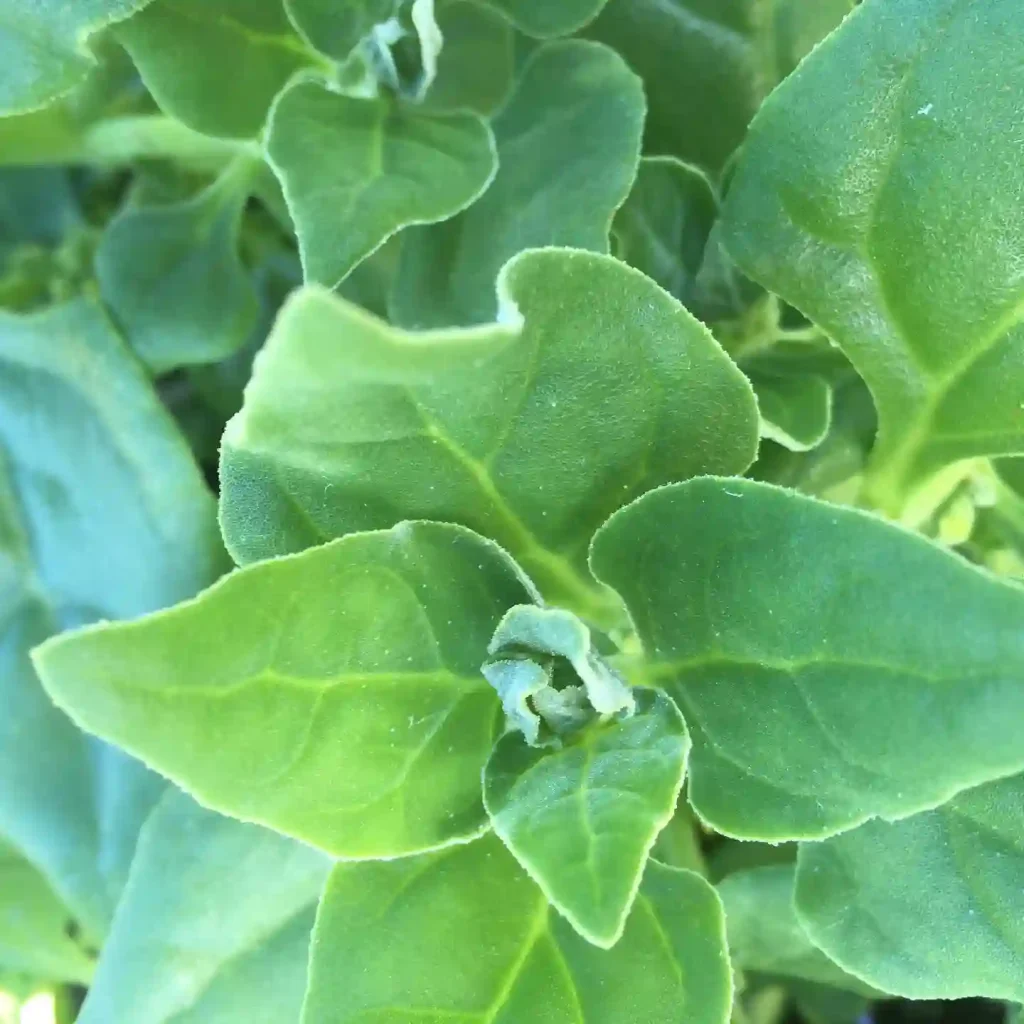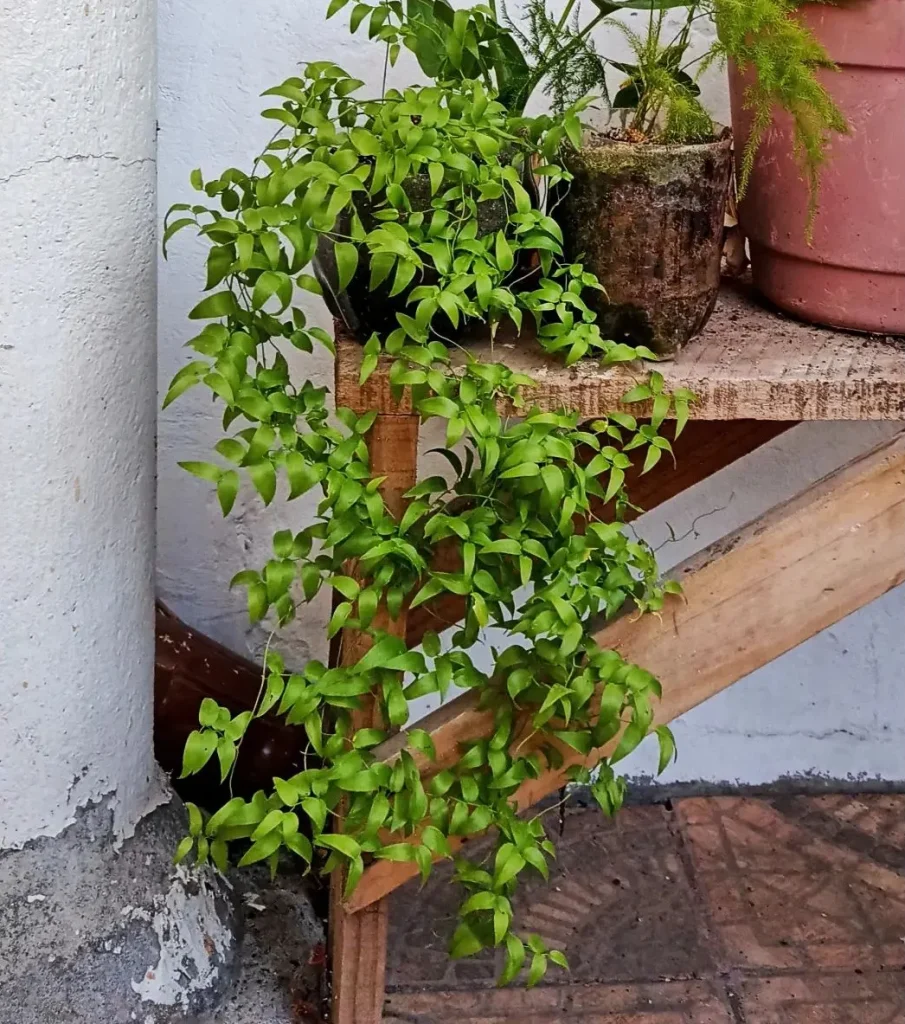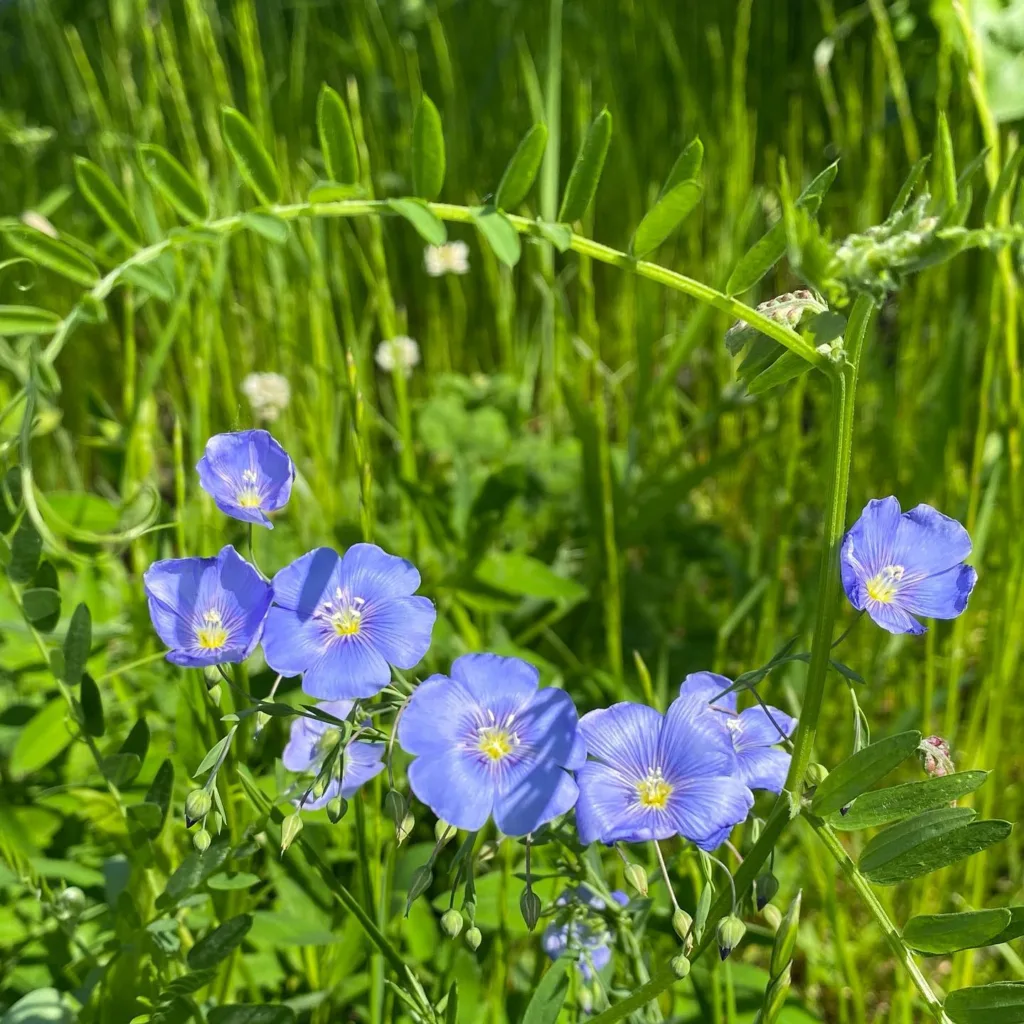
The Calathea Ornata, often affectionately called the Pinstripe Plant, is a true gem in the world of houseplants. Renowned for its stunning foliage, with vibrant pink or white stripes adorning deep green leaves, this tropical beauty captivates plant enthusiasts and interior decorators alike. Its striking appearance, coupled with its unique nocturnal leaf movements, makes it a fascinating and rewarding addition to any indoor plant collection.
Unveiling the Calathea Genus: A Family of Foliage Marvels
The Calathea Ornata belongs to the genus Calathea, a diverse group within the Marantaceae family, often referred to as the “prayer plant” family. This family is famous for its members’ nyctinastic movements – the fascinating phenomenon where leaves fold up at night and unfurl during the day, much like hands in prayer. This movement is regulated by a small joint called a pulvinus, located at the base of the leaf.
With approximately 59 species, the Calathea genus boasts an incredible array of leaf patterns, colors, and textures. From the intricate brushstrokes of the Calathea Makoyana (Peacock Plant) to the bold, contrasting hues of the Calathea Warscewiczii, each species offers a unique visual experience. The Calathea Ornata stands out with its distinctive pinstripes, making it a particularly sought-after variety.
Calathea Ornata vs. Its Cousins: A Comparative Beauty Parade
While the Calathea Ornata is undeniably a star in its own right, it’s often compared to other popular Calathea varieties, each possessing its own unique charm. Understanding these differences can help you appreciate the specific allure of the Ornata and choose the perfect plant for your aesthetic preferences.
Calathea Ornata vs. Calathea Beauty Star
Both the Calathea Ornata and the Calathea Beauty Star are celebrated for their intricate leaf patterns, yet they exude distinct “vibes.” The Ornata, with its bold, precise pink (or sometimes white) stripes against a dark green backdrop, creates a look of sophisticated elegance. It’s like nature’s bespoke pinstripe suit – sharp, confident, and undeniably striking. The lines are generally uniform and pronounced, giving it a very deliberate and polished appearance.
The Calathea Beauty Star, on the other hand, presents a softer, more artistic tableau. Its patterns are typically a lighter green with creamy white or pale pink stripes, often appearing more organic and less rigidly defined than the Ornata’s. The overall effect is one of intricate detail and serene refinement. Where the Ornata makes a bold statement, the Beauty Star invites closer inspection and offers a gentle, calming presence. If the Ornata is a grand symphony, the Beauty Star is a delicate watercolor painting.
Calathea Ornata vs. Calathea White Star
The comparison between Calathea Ornata and Calathea White Star highlights the subtle yet impactful variations within the genus. While the Ornata is known for its eye-catching pink (or sometimes creamy white) stripes, offering a pop of vibrant color, the White Star leans into a more subdued, delicate beauty.
The Calathea White Star features striking white and green patterns that are often more variegated and less linear than the Ornata’s pinstripes. Its elegance is understated, exuding a sense of calm and peacefulness. The white against the deep green creates a sophisticated contrast that, while less overtly “bold” than the Ornata’s pink, is equally captivating. The White Star embodies subtle beauty, perfect for creating a serene atmosphere, whereas the Ornata is designed to be a showstopper, drawing the eye with its vibrant stripes. Both are undeniably gorgeous, but they cater to different aesthetic preferences, making them unique presences in any plant collection.
The Art of Cultivation: How to Care for Your Calathea Ornata
Caring for a Calathea Ornata, like any tropical plant, requires understanding and replicating its natural habitat as closely as possible. While it may seem demanding at first, establishing a consistent routine will lead to a thriving and beautiful plant.
Lighting: The Dance with Indirect Light
Calathea Ornata thrives in bright, indirect light. In its natural rainforest environment, it grows beneath the canopy of larger trees, receiving dappled sunlight. Direct sunlight, especially the harsh afternoon sun, can scorch its delicate leaves, causing them to fade or develop brown patches. An east-facing window that receives gentle morning sun or a north-facing window offering consistent, diffused light is ideal. If you don’t have access to such light, placing your Calathea a few feet away from a south or west-facing window, or using sheer curtains to filter the light, can work effectively. Signs of too much light include faded leaf colors and crispy edges.
Watering: The Moisture Balance
The key to watering Calathea Ornata is consistency. These plants prefer consistently moist, but never soggy, soil. Overwatering is a common pitfall, leading to root rot, a silent killer for many houseplants. Conversely, allowing the soil to dry out completely can cause the leaves to curl and crisp.
A good rule of thumb is to water when the top inch (2.5 cm) of soil feels slightly dry to the touch. Stick your finger into the soil to gauge the moisture level. When watering, ensure the water drains thoroughly from the bottom of the pot. Never let your Calathea sit in standing water. Using filtered water or rainwater is highly recommended, as Calatheas are sensitive to the chlorine and minerals often found in tap water. These can accumulate in the soil and lead to brown leaf tips. Allowing tap water to sit out for 24 hours can help dissipate some of the chlorine.
Humidity: A Tropical Embrace
Humidity is perhaps the most crucial factor for a happy Calathea Ornata. Hailing from the humid understory of tropical rainforests, they absolutely thrive in high humidity (ideally above 60%). Low humidity is a primary culprit for crispy leaf edges and stunted growth.
There are several ways to increase humidity around your plant:
- Misting: While misting can provide a temporary boost, it’s not a long-term solution as the moisture evaporates quickly. However, a daily misting can certainly contribute.
- Pebble Tray: Place your potted Calathea on a tray filled with pebbles and water, ensuring the bottom of the pot doesn’t sit directly in the water. As the water evaporates, it creates a more humid microclimate around the plant.
- Humidifier: For consistent and effective humidity, especially in drier climates or during winter, a small room humidifier placed near your Calathea is the best option.
- Grouping Plants: Plants release moisture through transpiration, so grouping several plants together can create a localized humid environment.
Temperature: Warm and Stable
Calathea Ornata prefers warm and stable temperatures, ideally between 65-80°F (18-27°C). Avoid sudden temperature fluctuations, cold drafts from windows or air conditioners, and placement near heating vents, as these can stress the plant and lead to leaf curling or browning.
Soil: The Foundation of Health
A well-draining, moisture-retentive potting mix is essential for Calathea Ornata. A good blend often includes peat moss or coco coir for moisture retention, perlite or orchid bark for drainage, and a bit of compost for nutrients. An all-purpose houseplant mix amended with extra perlite or orchid bark usually works well. The soil should be slightly acidic to neutral.
Fertilizing: A Gentle Touch
During the growing season (spring and summer), feed your Calathea Ornata with a balanced liquid fertilizer diluted to half strength every 2-4 weeks. Reduce or cease fertilization during the dormant fall and winter months. Over-fertilizing can lead to nutrient burn and damage the roots, so err on the side of caution.
Growth and Development: How Big Can Calathea Ornata Grow?
With optimal care, the Calathea Ornata can grow to an impressive size, typically reaching about 2 feet (60 cm) in height and width at maturity. Its lush, vibrant foliage creates a stunning focal point, transforming any space into a tropical oasis. Providing it with adequate space to unfurl its leaves without being crowded by other plants will encourage it to reach its full potential and develop its characteristic bushy habit. The size can also vary slightly depending on the specific cultivar and growing conditions.
Expanding Your Collection: How to Propagate Calathea Ornata
Propagating Calathea Ornata is a rewarding way to expand your plant collection or share your green thumb with friends. The most successful method is through division during repotting.
- Timing: The best time to propagate is during repotting, typically in spring or early summer when the plant is actively growing.
- Preparation: Gently remove the plant from its pot. Loosen the soil around the roots.
- Division: Carefully inspect the root ball for natural divisions or clumps of rhizomes (underground stems) with their own root systems and a few leaves. Using clean, sharp shears or a sterile knife, gently separate these sections, ensuring each division has a healthy root system and at least 2-3 leaves. Avoid tearing or damaging the roots excessively.
- Potting: Plant each division in its own small pot filled with fresh, well-draining potting mix. The pot size should be appropriate for the size of the root ball, not too large.
- Aftercare: Water thoroughly after potting. Place the newly potted divisions in a warm, humid environment with bright, indirect light. Maintain consistent moisture in the soil. It may take some time for the new divisions to establish themselves and show new growth, so patience is key. Providing extra humidity during this period can aid in successful establishment.
Refreshing Its Home: How to Repot Calathea Ornata
Repotting is a vital part of maintaining the health and vigor of your Calathea Ornata. It helps refresh the soil, which can deplete nutrients and compact over time, and provides more space for root growth.
- Frequency: Repot your Calathea Ornata every 1-2 years, or when you notice signs of it being root-bound (e.g., roots growing out of drainage holes, stunted growth, quick drying soil). Spring is the ideal time for repotting.
- Pot Size: Choose a pot that is only one size larger (e.g., from a 6-inch to an 8-inch pot). Too large a pot can lead to excess moisture retention and root rot.
- Process:
- Water your plant a day or two before repotting to make the soil easier to work with.
- Gently remove the plant from its current pot. You may need to gently squeeze the pot or run a knife around the edges if it’s stuck.
- Carefully inspect the roots. You can gently loosen any circling roots at the bottom.
- Add a layer of fresh, well-draining potting mix to the bottom of the new pot.
- Center the Calathea in the new pot, ensuring the top of the root ball is at the same level as it was in the previous pot, or slightly below the rim of the new pot. Avoid burying the rhizome too deeply.
- Fill the remaining space with fresh potting mix, gently tamping it down to remove large air pockets.
- Water thoroughly after repotting to help the soil settle around the roots.
- Place the repotted plant back in its usual spot with bright, indirect light. Some initial shock (temporary wilting) is normal, but the plant should recover within a few days.
Troubleshooting: How to Save a Stressed Calathea Ornata
Calathea Ornata can be a bit dramatic, and its leaves are often the first to signal distress. Early detection and swift action are key to saving a struggling plant.
- Curling Leaves: This is a common symptom and often indicates low humidity, underwatering, or exposure to cold drafts/direct sunlight. Check the soil moisture, increase humidity, and move the plant if it’s in a harsh environment.
- Crispy/Brown Leaf Edges: Almost always a sign of low humidity or mineral buildup from tap water. Increase humidity with a humidifier or pebble tray and switch to filtered water.
- Yellowing Leaves: Can be a sign of overwatering (leading to root rot), underwatering, or nutrient deficiency. Check soil moisture; if overwatered, allow it to dry out more. If underwatered, adjust your routine. If consistent, consider a gentle fertilizer.
- Drooping Leaves: Similar to curling, this often points to underwatering or lack of humidity. It can also be a sign of root rot from overwatering. Assess the soil moisture carefully.
- Pests: While generally resilient, Calatheas can be susceptible to common houseplant pests like spider mites, mealybugs, and scale, especially in low humidity. Inspect your plant regularly, particularly the undersides of leaves. Treat infestations promptly with insecticidal soap or neem oil.
The most important step in saving a stressed Calathea is to identify the root cause of the problem. Systematically check each care factor: light, water, humidity, temperature, and pests. Adjusting one variable at a time will help you pinpoint the issue.
Safety First: Is Calathea Ornata Toxic to Cats?
For pet owners, the safety of houseplants is a major concern. The good news is that Calathea Ornata is non-toxic to cats and other pets, including dogs. This provides peace of mind, allowing you to enjoy this beautiful plant without worrying about your furry companions. While it’s always best to discourage pets from chewing on any plant, accidental ingestion of Calathea Ornata is not expected to cause severe health issues.
Understanding Its Rhythms: Why is My Calathea Ornata Curling? Does it Close at Night?
The dramatic leaf movements of Calathea Ornata are one of its most captivating features.
Why is My Calathea Ornata Curling?
Leaf curling in Calathea Ornata is a defense mechanism and a strong indicator of environmental stress. Here are the primary reasons:
- Low Humidity: This is the most common culprit. When the air is too dry, the plant curls its leaves inward to reduce the surface area exposed to the dry air, thereby minimizing water loss through transpiration.
- Underwatering: If the soil is too dry, the plant cannot absorb enough water to keep its leaves turgid, leading to wilting and curling.
- Direct Sunlight/Too Much Light: Intense, direct light can stress the plant, causing the leaves to curl as a way to protect themselves from excessive light and heat.
- Cold Drafts/Sudden Temperature Changes: Calatheas are sensitive to cold and rapid temperature shifts. A sudden drop in temperature or exposure to a cold draft can cause the leaves to curl.
- Pests: Severe pest infestations can also stress the plant and lead to curling, though other symptoms like discoloration or sticky residue would likely be present.
Addressing the underlying issue – increasing humidity, adjusting watering, moving the plant to a better light location, or protecting it from drafts – will usually resolve leaf curling over time.
Does Calathea Ornata Close at Night?
Yes, absolutely! One of the most enchanting characteristics of the Calathea Ornata, like many members of the Marantaceae family, is its “prayer plant” movement, or nyctinasty. Throughout the day, its leaves lay flat, showcasing their vibrant patterns. As dusk approaches and light levels diminish, the leaves will slowly begin to fold upwards, almost as if they are in prayer or preparing for sleep. In the morning, as light returns, they unfurl again. This mesmerizing movement is controlled by specialized cells in the pulvinus, located at the base of each leaf. It’s a natural response to changes in light and temperature, likely an evolutionary adaptation to optimize light absorption and minimize water loss during the night. Witnessing this daily dance is a truly magical experience for any plant parent.
Sourcing Your Stripey Gem: Where to Buy Calathea Ornata?
Finding a healthy Calathea Ornata is the first step to a successful plant-parenting journey.
- Local Nurseries and Plant Shops: These are excellent places to start. Reputable nurseries often carry a good selection of Calathea species, including the Ornata. The advantage of buying locally is that you can inspect the plant in person for signs of health (no pests, vibrant leaves, firm stems) and get advice from knowledgeable staff.
- Online Plant Retailers: For a wider selection, especially if you’re looking for specific cultivars or larger specimens, online plant shops are a fantastic resource. Many reliable online nurseries specialize in houseplants and offer careful packaging to ensure the plant arrives safely. Read reviews to gauge the quality of plants and shipping practices.
- Big Box Stores: While some larger retailers may carry Calatheas, be more cautious. Plants in these environments may not receive the specialized care they need, so inspect them very carefully for pests, overwatering, or other signs of stress before purchasing.
Regardless of where you buy, always aim for a plant with vibrant, unblemished leaves, healthy-looking soil, and no visible signs of pests.
A Gardener’s Time-Lapse: My Calathea Ornata Journey
Month 1: The Arrival of a Tiny Hope
It arrived as a small, unassuming plant, barely 6 inches tall, nestled carefully in its packaging. Its leaves, though few, already displayed the unmistakable delicate pink pinstripes against deep green – a miniature promise of the elegance to come. I had heard Calatheas could be finicky, but I was determined. I placed it in a spot with bright, indirect light, near an east-facing window, ensuring no direct sun would touch its tender leaves. My first mission was humidity. I set it on a pebble tray and started a twice-daily misting ritual. The initial days were anxious; I checked on it constantly, convinced every slight leaf curl was a sign of impending doom. I quickly learned to check the soil with my finger – watering only when the top inch was just starting to feel dry. Filtered water was a must; I’d even started leaving a jug of tap water out overnight.
Month 3: Settling In and the First Unfurling
Three months in, and my little Ornata had truly settled. The initial anxiety had given way to a gentle rhythm. New leaves began to unfurl, one after another, each a tightly rolled cigar of green and pink, slowly revealing its intricate pattern as it matured. It was during this period that I first truly witnessed the “prayer plant” movement. One evening, I noticed its leaves slowly lifting upwards, folding slightly. The next morning, they gracefully lowered again. It was a subtle, almost imperceptible dance, but utterly captivating. I noticed some minor browning on a few older leaf tips, a gentle reminder that my humidity efforts needed to be constant, not just intermittent misting. I invested in a small humidifier for the room, a game-changer that immediately improved its overall look.
Month 6: A Growth Spurt and the First Repot
The humidifier made a world of difference. My Calathea Ornata was no longer just settling in; it was thriving. It had visibly bushier, with multiple new stems emerging from the soil. It had grown to almost a foot tall, and its original 4-inch pot was starting to look cramped. It was time for its first repotting. I carefully unpotted it, marveling at the healthy white roots filling the old pot. I chose a 6-inch pot, just one size up, and used a fresh, well-draining mix. The repotting process was surprisingly smooth, and within a week, it showed no signs of shock, continuing its vigorous growth. This was also when I began a very diluted feeding schedule during its active growing phase.
Year 1: A Statement Piece and the Art of Division
By its first anniversary with me, my Calathea Ornata had transformed into a truly magnificent specimen, easily reaching 18 inches in height and width. Its pinstriped leaves were abundant, creating a dense, elegant canopy. It had become a true statement piece in my living room, drawing admiring glances from everyone who visited. During its second annual repotting, I noticed it had formed several distinct clumps, each with its own root system. This was my opportunity to try propagation! I carefully divided one healthy section, placing it in its own small pot. It was a nervous endeavor, but the “baby” Ornata, though smaller, carried the same striking patterns as its parent. It was amazing to see new life emerge from my established plant.
Year 2 & Beyond: Maintaining Majesty and Sharing the Beauty
Now, my original Calathea Ornata stands at its full glory, approximately 2 feet tall and wide, a testament to consistent care and attention. Its leaves are vibrant, its movements graceful. The divided “baby” has grown into a beautiful plant in its own right, now gracing a friend’s home. I’ve learned the rhythm of its needs: regular watering, high humidity, consistent indirect light, and biannual repotting. I’ve also learned to “read” its leaves – a slight curl means more humidity, a droop means it’s thirsty. The occasional brown tip still appears, but it’s a minor imperfection on a plant that brings so much life and elegance to my home. The Calathea Ornata isn’t just a plant; it’s a living, breathing work of art that continues to fascinate and inspire me daily. Its time-lapse journey, from a tiny hopeful seedling to a grand showstopper, has been one of the most rewarding experiences in my gardening adventure.
If i die, water my plants!



